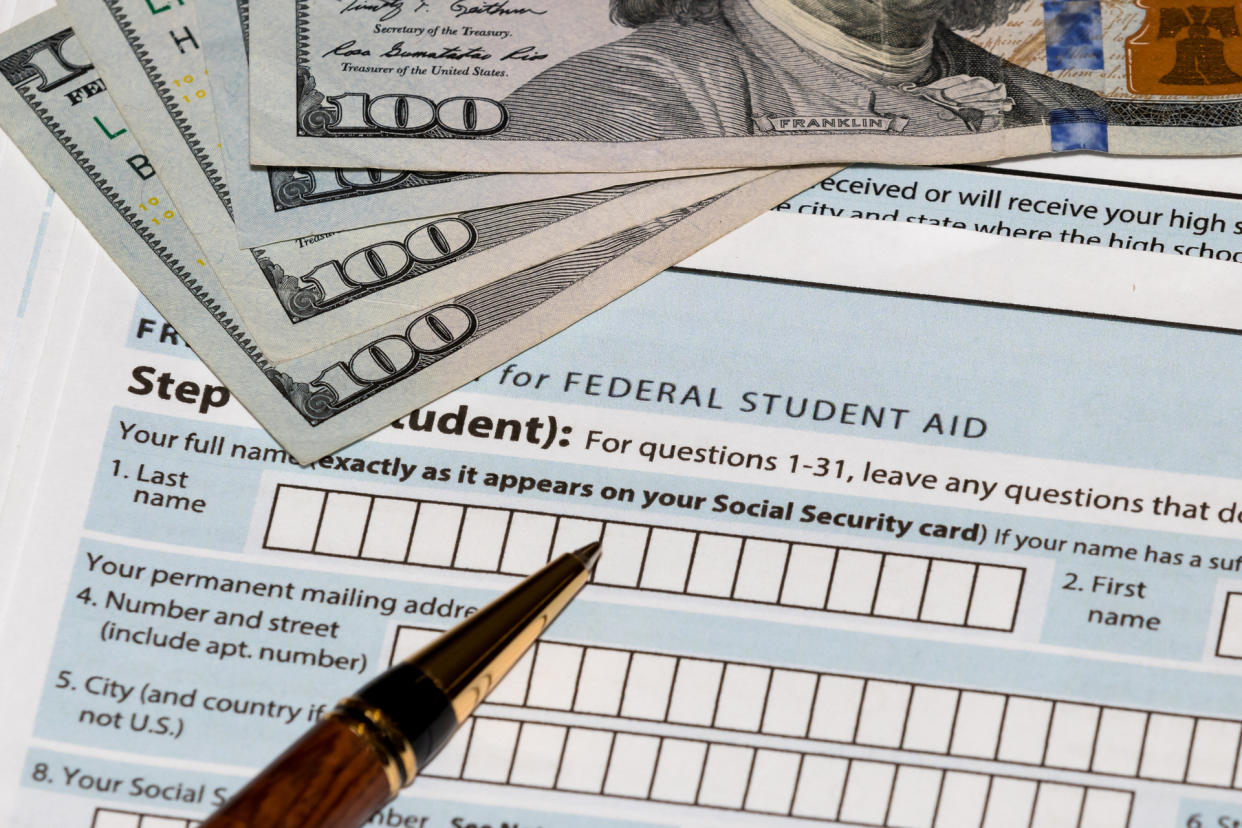Will the Fed. Student Loan Program Need a Bailout?

For the nearly 45 million Americans struggling to pay back student loans, many with no option but to default, they aren’t giving a second thought to how the government will recover the money. After all, you can’t pay what you don’t have.
See: No Fourth Stimulus Check? Prepare to Wait – White House Says ‘Those Checks Are Not Free’
Find: More Stimulus Money May Be Coming Your Way – Here’s What To Do With It
But how much do Americans really owe in student loan debt? And what happens if it’s not paid back?
An analysis done by former JPMorgan executive Jeff Courtney, who was hired by the U.S. Education Department to research the financial situation of student loan debt shows that American taxpayers could be collectively on the hook for as much as $500 billion to help reduce the federal deficit as a result of miscalculations based on student loan debt and income, the Wall Street Journal reports.
Due to years of cash-based accounting, the government estimated that it had approximately $1.6 trillion in funds from student loans. But Courtney’s calculations, according to MarketWatch, came in closer to one-third of that figure, or approximately $500 billion.
In cash-based accounting, loans are marked as expenditures at the time the money is issued, but repayments show up as revenue gradually as the loan matures. When the Federal government guarantees a student loan, on the other hand, fees are marked as revenue as they come in, but any defaults on those loans aren’t recognized until the loan matures.
In short, when the government issues a loan, it is considered to increase revenue, Donald Marron, director of Economic Policy at the Urban Institute, told MarketWatch. Since Congress budgets over a 10-year time frame, MarketWatch reports, the Congressional Budget Office ignored the upfront expenditure on loans and estimated cash-flow effects of the transaction as the loan matures.
“The standard estimates are that in most years the interest people pay and the fees they will pay are more than enough to cover the federal borrowing costs plus whatever the defaults are,” Marron told MarketWatch.
See: $3,600 Stimulus Payments for Families to Start in July
Find: The American Families Plan Has a High Price Tag — Here’s Everything Included in the Cost
These accounting calculations helped make budget deficits appear to be smaller, which helped create a veritable explosion of student loan debt between the early 1990s and today, said Susan Weber, a Goldman Sachs veteran, in a MarketWatch report.
The student loan program looked more profitable, on paper, resulting in legislation to expand the program. In 1992, the federal government made loans available to borrowers from upper-income households and Congress increased the maximum amount parents could borrow for their children, the Wall Street Journal reports. In 1993, loans could be re-paid based on the borrower’s income and loan terms were increased to a possible 25 years, instead of 10, the same article states. This led to an increase in student loan debt across the U.S.
The Wall Street Journal reported that President Biden’s administration ended Courtney’s research project this February, stating that the “analysis used incomplete, inaccurate data and suffered from significant methodological shortcomings, including a dubious method for predicting borrowers’ future income.”
Courtney’s calculations had revealed that the federal student loan portfolio is likely to earn 37% less than what the Education Department maintains today, says MarketWatch, resulting in the need for a $500 billion bailout from the U.S. Treasury. The data could also be used to push for a restructuring of the federal student loan program.
More From GOBankingRates
Money’s Most Influential: Where Do Americans Get Their Financial Advice?
‘Rich Dad Poor Dad’ Author Robert Kiyosaki: You Should Never Say ‘I Can’t Afford That’
This article originally appeared on GOBankingRates.com: Will the Fed. Student Loan Program Need a Bailout?
